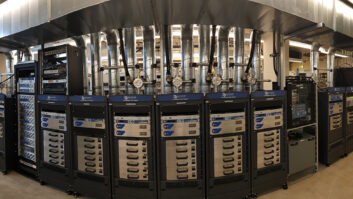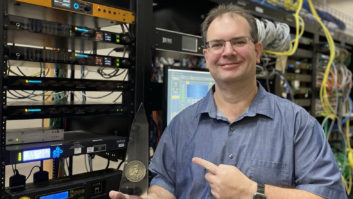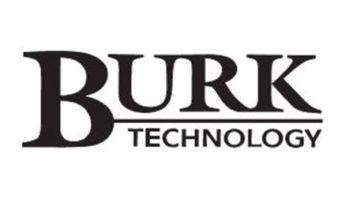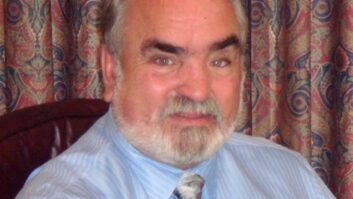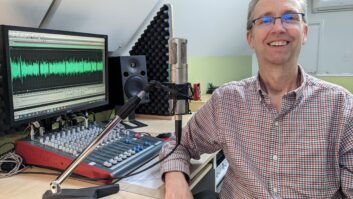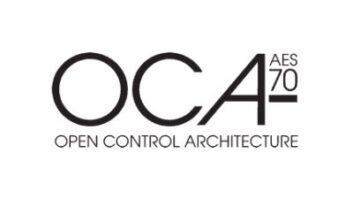Like any technology, the world of radio broadcasting is in a constant evolution, and when you are a legacy radio station like WRAY in Princeton, Ind., with more than 60 years of continuous broadcasting operation, you�ve seen a world of change.
Vice President and General Manager Steve Lankford is the third generation to manage this AM-FM combo, and like his father and grandfather before him, he is committed to serving his� community and the surrounding area as only live, local radio can do.

WRAY is a 1,000 Watt daytime AM facility that went on the air in 1950, and WRAY(FM) is a 50,000 Watt class B station that began broadcasting in 1960 as technology changed. The AM-FM combo gives the Lankford family the opportunity to super-serve their community, and they were committed to doing that even when it required live board operators and on-site engineers to stay on the air.
Now, changes in technology allow the AM station to broadcast news-talk programming around the clock, completely automated by satellite-fed Broadcast Electronics AudioVault.
The FM Country format is live in the studio from 6 a.m.�6 p.m. (Monday through Saturday) and automated overnight, also via AudioVault. Weekend programming includes a three-hour live studio jam session called �Roots of Country,� as well as satellite-fed long-form programs.
The synergy of the operation is made possible because Steve has embraced the changes in technology that have come along over the years, which is where my part of the story begins.
I have a contract engineering business that serves clients primarily in three states, and the first technical work I did for WRAY was to upgrade the on-air phone system to a Gentner multi-studio setup back in 1995. With two main studios, one for on-air and one for large production, two additional smaller studios for news/production, WRAY is a busy place.
The station has had 60 years of continuous broadcasting operation.

I then installed the AudioVault system around 1998, which was a huge change from carts and reel-to-reel production, and unleashed the AvAir Automation shortly thereafter. The next big change was to update consoles and completely re-do all four studios. We pulled miles of old wire out that had been there forever and replaced it with miles of new wiring. Wheatstone supplied the R-60 consoles that had served extremely well for almost 20 years, which brings us to the present.
As a major update to the facility was considered, we had four major goals in mind:
System audio quality must be equal to or better than the present analog system and not just on paper � it had to sound good, too!
System must be robust and able to operate in high-RF environment with co-located 1000 Watt AM and 50,000 Watt FM just outside the back door.
System needed to be flexible, easily configurable and updateable, with a minimal operator learning curve.
System needed to integrate well with existing AudioVault automation system.
Lankford�s commitment to technical excellence took us back to Jay Tyler at Wheatstone and the new WheatNet-IP system. We were intrigued by its capability to handle multiple studio operations and at the same time remain flexible to change, so finally the decision was made to move forward. Wheatstone�s corporate commitment to excellence in both products and support along with our years of working with them made it a relatively easy decision, and the ability to integrate it with AudioVault was definitely a bonus. In early 2016, the equipment was ordered and began to arrive.
We pulled miles of old wire out that had been there forever and replaced it with miles of new wiring.


In order to both learn the WheatNet-IP system and to begin to integrate with the facility without disrupting operations, each studio�s WheatNet Blades were first set up in a desktop rack in Lankford�s office. After getting them to talk and play nicely together, it was time to get serious about change, once again. Equipment was moved into the transmitter/TOC space and installation began.
The WheatNet architecture is relatively simple, with each studio using a Blade as the analog/digital IO. It is connected to a control surface, which for us was the IP12, and to an edge gigabit switch (Cisco SG300) that connected to the main switch (Cisco Catalyst 2960) in the transmitter room/TOC. All input and playback devices connect to the Blade in the studio, and once connected, are available anywhere throughout the station.
Multiple Shure RE-27 microphones in the control room and Studio A are fed to mic Blades that handle four additional mics, and include Wheatstone M-4 mic processing.
The satellite closet with eight different receivers has its own Blade (four analog, four digital I/O), so that all satellite feeds are also available anywhere in-house, and all contact closures are available as well.
All data is routed throughout the station on an isolated WheatNet-IP network built with Cat6 shielded cable that terminates in L-Com RMSP-CAT6T-4IP surge protectors at each end. With a 420-foot tower at the back of the building, lightning is a way of life, and close attention to shielding is required with the 1000 Watt AM exciting every wire in the building.
To remove the computer fan noise from the studios, WRAY installed two rackmount PCs for each studio in the TOC, one running production software (Audacity) and one running AudioVault. An ATEN rackmount CS1308KIT KVM with monitor was installed in the rack with the PCs, and then also sent to the individual studios with an ATEN CE100 Cat5 USB KVM Mini Console Extender which has a 320-foot range. We found that Belden Cat5e cable gave the best performance on these boxes, and that cheap cable did not work reliably.
L-Com RMSP-CAT6T-4IP surge protection is also used on each end of the KVM runs, and so far we have had one catastrophic lightning event that destroyed the extenders while protecting the equipment. They were easily replaced, and spares are on hand for future issues.
WRAY(FM)�s studio also features the WheatNet-IP-metering app, seen on a large monitor in-studio, monitoring the output of the final blade in the air-chain. Dave Kunkle assesses the situation.

Because Wheatstone provides virtual drivers, WRAY no longer needed Digigram soundcards for the AudioVault, and the four AudioVault computer workstations now appear on the WheatNet as another device, like a Blade. Two four-channel drivers and two single-channel drivers to handle all audio I/O. and remote control functions like satellite closures are routed to AudioVault from the satellite room by a BE RiotBox which distributes closure activity over Ethernet to the entire building.
After building the new eight-PC system from off-the shelf hardware in a rack in the TOC, we brought up the new AudioVault system in parallel with the current analog Vault. This enabled us to resolve driver issues, build contact closure salvos and debug the entire integration.
Wheatstone also offers a crosspoint router/programming interface utility called WheatNet-IP Navigator that was installed on a separate utility PC with a big monitor to enable observation, monitoring, troubleshooting and programming of the entire system, as needed.
Installation was then rolled out studio by studio with minimal interruption of normal operation and only a few late-night sessions.
TODAY
With WheatNet-IP, change is almost unending. By that, I mean we are constantly finding better ways to do things.
Floyd Turner and Vice President/ General Manager Steve Lankford admiring the WheatNet/AudioVault system.

The miles of wire have been reduced to hundreds of feet of Cat5 and Cat6 wiring. While we had to learn Cisco-speak to program the switches, and found that not all Cat5e cable is equal, we were able to get the gigabit Ethernet network working well in short order.
We actually have three separate networks: one for WheatNet-IP; one for Audiovault; and one for production/email/online work. The isolation protects the mission-critical parts, and the exposure to the outside world is protected by both hardware and software firewalls. So far, so good!
The WheatNet-IP-Metering app was added, which lets the audio-channel outputs be projected on a large confidence monitor in the on-air studio, and with WheatNet-IP, it can monitor any point in the air chain. It is set on the final Blade output, just before the audio processors for both AM and FM, and it can also view off-air signals, if desired.
Other applications have been discovered through necessity.
The FM audio was dropping out intermittently (audio sync unlocking?), and since the entire air chain is digital up to the transmitter, we were looking at a multitude of potential places for failure. An engineer friend suggested running Ping Plotter, an IP activity recording device that pings every device on a network every few seconds and plots the results (both latency and packet loss). It�s an IT stress test, and after running it for 24 hours, we found no issues with any of the WheatNet or AudioVault devices; so we looked to the Orban 8600 processor.
Changing to our backup processor eliminated the problem, so we shipped the processor off to Orban, but they found no problem.
The only other link in the chain was the Sage EAS AES/EBU pass-through, and sure enough, that was the source of the issue.
WheatNet-IP to the rescue! A few mouse-clicks and some simple salvo programming allowed the EAS output to be routed through the transmitter Blade, and WheatNet-IP switched the audio when alerted by the EAS receiver.
When we started out, we kept the studio configuration as close as possible to the previous setup for ease of learning, but, quickly, the on-air staff wanted to take advantage of the WheatNet ability to call up different configurations at will, mixing mic signals down to faders and using signals from other studios with ease. So salvos were built, buttons programmed, and the morning guys can reset the board with a button push from where it was left the previous night. (We could have set it to reset automatically, but I thought they needed to have something to do�)
TOMORROW
Ivan MacDonald, engineer-in-training

While we still have a few bells and whistles to add to the system, we are confident that the built-in flexibility and configurability will keep it functioning well into the future.
Most importantly, it sounds fantastic on the air, functions well in an RF environment, and has made me feel like the proverbial Maytag repair man�. And I love it!
Thanks to my assistant Ivan MacDonald, to the staff at WRAY,� to the tech support staff at Wheatstone and Broadcast Electronics, and to Steve Lankford at WRAY � everyone who made this exciting job possible!
Floyd Turner, CBRE, CBNT, is the owner of FET Engineering and president and chief engineer of Thy Word Network Christian Radio, which has six FM and one AM stations in Indiana, Kentucky and Illinois.





